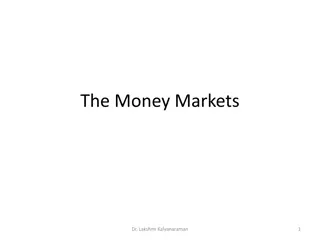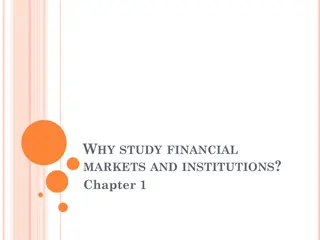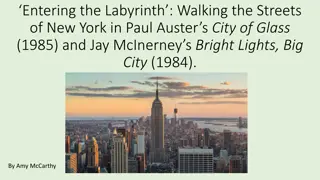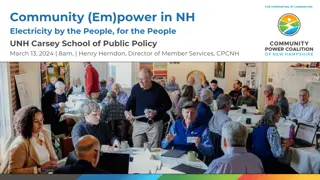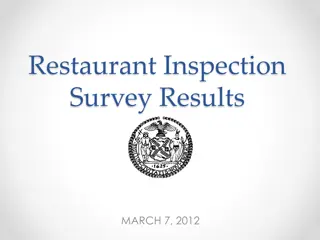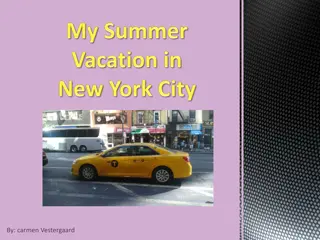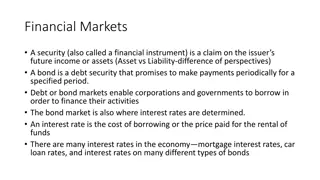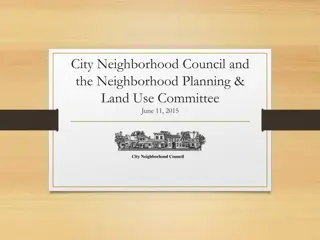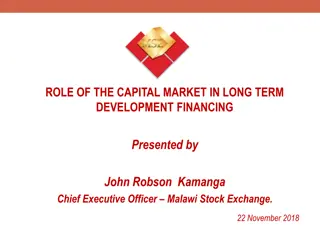Evolution of Markets and Peddlers in New York City
Early markets in New York City date back to the 17th century, with the establishment of public markets and the emergence of peddlers playing a significant role in the city's history. The evolution of markets, corruption issues, the importance of peddlers to immigrants, and the challenges they faced, including efforts to abolish peddling, have left a lasting impact on the city's commerce landscape. While pushcarts were eventually phased out, peddling continues to provide opportunities for immigrants to earn a living.
Uploaded on Oct 04, 2024 | 0 Views
Download Presentation

Please find below an Image/Link to download the presentation.
The content on the website is provided AS IS for your information and personal use only. It may not be sold, licensed, or shared on other websites without obtaining consent from the author. Download presentation by click this link. If you encounter any issues during the download, it is possible that the publisher has removed the file from their server.
E N D
Presentation Transcript
Early Markets 1641 Natives and Country people sold goods Monday=weekly market day Set up a market 1656 First Public Market Saturday=weekly market day
1658 First Meat Market created in response to corruption 1699 Fly Market Opened 1795 Fly Market became filthy and overcrowded Closed in 1823
Corruption Until 1841, sellers paid a tax for the right to sell in the public markets 1841, butchers sold meat in shops illegally Stationary peddlers City ordinance limited peddlers to 30 minutes of peddling in one spot Licenses expired 1904, 5124 peddlers arrested, many paid off the police.
Peddlers Important to immigrants Rent for cart = 10 cents/day (1880) 20cents/day (1925) Many poor people sold fruits, vegetables and candies for a living 1/3 of the peddlers sold nonfood goods (clothing, hats, shoes, furnishings, pans, bedding, bags) 1900, 25000 immigrants were peddlers 1925, 31000 New Yorkers were peddlers 77% Jewish, 22% Italian, 1% other
The fight to abolish Peddling Store merchants saw peddlers as unfair competition and a nuisance Merchants assumed pushcarts lowered property value Mayor LaGuardia was also against peddlers First Indoor Market WPA
Impact on Peddlers Indoor Market= $4/week, 4x on the street New York Post- they might starve faster indoors: pushcart dealers too depressed to care Some days I don t make 75 cents, Can you live on that? Venders had to be citizens
Aftermath New Yorkers sad that pushcarts were closed down Pushcarts were seen as an adventure With these pushcarts left old Orchard St last January, high values went with them Stoop line stands 1935= 15,000 peddlers 1939= 2,700 peddlers left Today Peddling gives immigrants a way to earn a living
War Prosperity and Hunger: The New York Food Riots of 1917
Prices are on a rise! February 19, 1917 Brownsville Brooklyn violence erupted amongst women and peddlers due to sudden rise in prices Food Riots spreading through working class cities: NY, Boston, Philadelphia. Onions selling for 15-18 cents (5 cent rise), Potatoes 5-7 cents and Chicken 32 cents (luxury)
Whos to blame? President Wilson blames middleman George Perkins (NY Financer) Better methods of food distribution and government interventions Federal Trade Commission blames the existence of unlawful combinations among dealers. American Capitalism receiving high profits from WWI selling food to Europe at high prices increases cost of living
Fighting the high prices Violence continued to outbreak in New York through Feb and March. Waldrof Astoria Hotel: women and children banging on doors begging for food. Would fight back authorities. Anti High Price League attempted to enforce boycotts of groceries and butcher shops. (East side and Bronx)
What are we suppose to do? Peddlers carts were overturned and set on fire by women outraged by price increase Public Meeting at New Plaza Hotel to explain that they bought these items (such as onions for $15 a bag and potatoes for $10 a bag) from Terminal of Long Island Rail Road Henry Eiser his profits were only 75 cents a week
Horrors of Riots Women would take their children to protest with them. Injuries amongst crowds over run by horses or motorist Women would attack police officials , hunger and anger amounted for uncontrollable rage Rise in infant mortality: Milk given to babies were diluted. Loose milk in order to be bought cheaper.
Possible solutions Mayor Mitchel advised consumers to buy rice ( for no more than six cents) as a substitute for higher priced foods. Public to subsidize $100,000 so white potatoes, sweet potatoes, and onions for new market source Terminal markets introduce bill for state bond issue: Wick s Food and Market bill bring relief to poor. Congressmen London: Government intervention to prevent individual greed
Discussion Questions: Pushcarts/ Markets Do pushcarts clog up the streets or do they contribute to the atmospheres of the city? What are some positive and negative aspects of pushcarts in New York City? Do you think pushcarts are still helpful for immigrants who are starting off?
Discussion Questions: Food Riots If food prices were to suddenly increase suddenly today would low income workers react any differently than in 1917? Would women still make up a large portion of protestors? What are methods the government should take to remediate the issue of raising produce prices? What are factors that contribute to raising prices? Is it possible in our present society for food to skyrocket?






